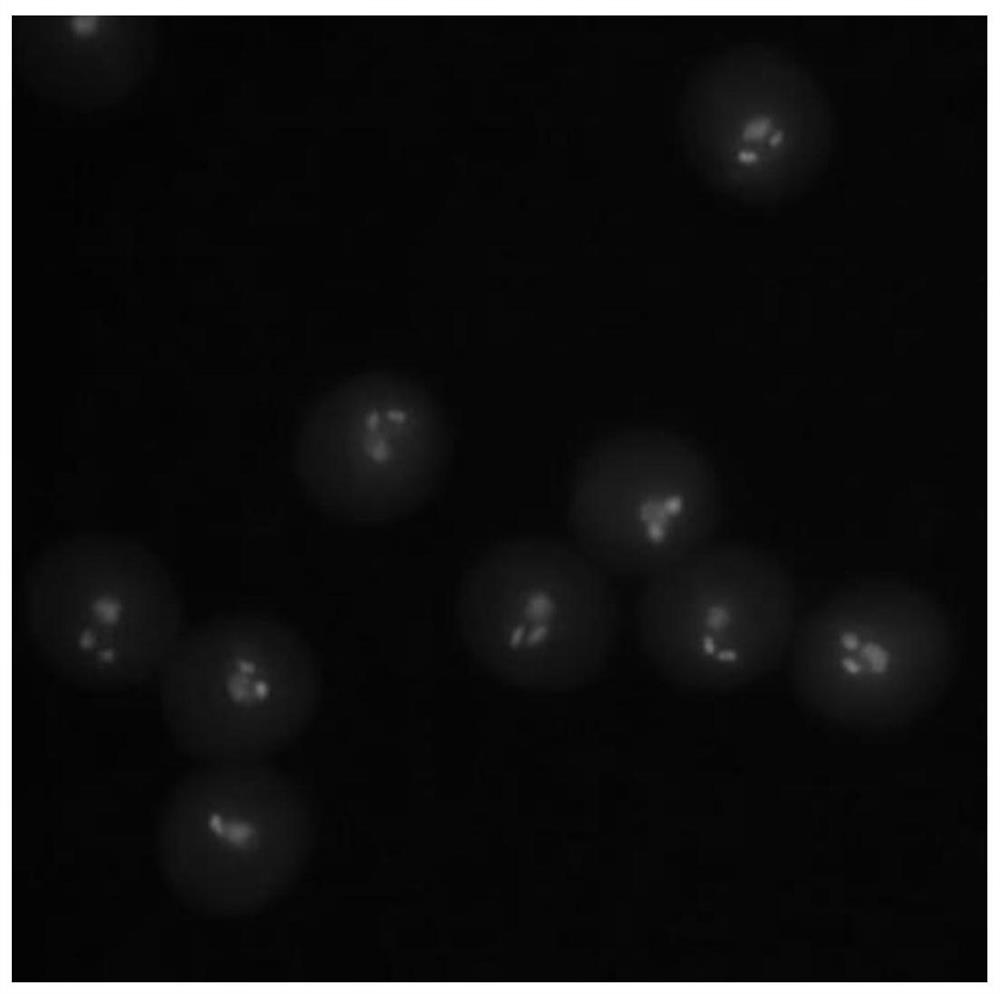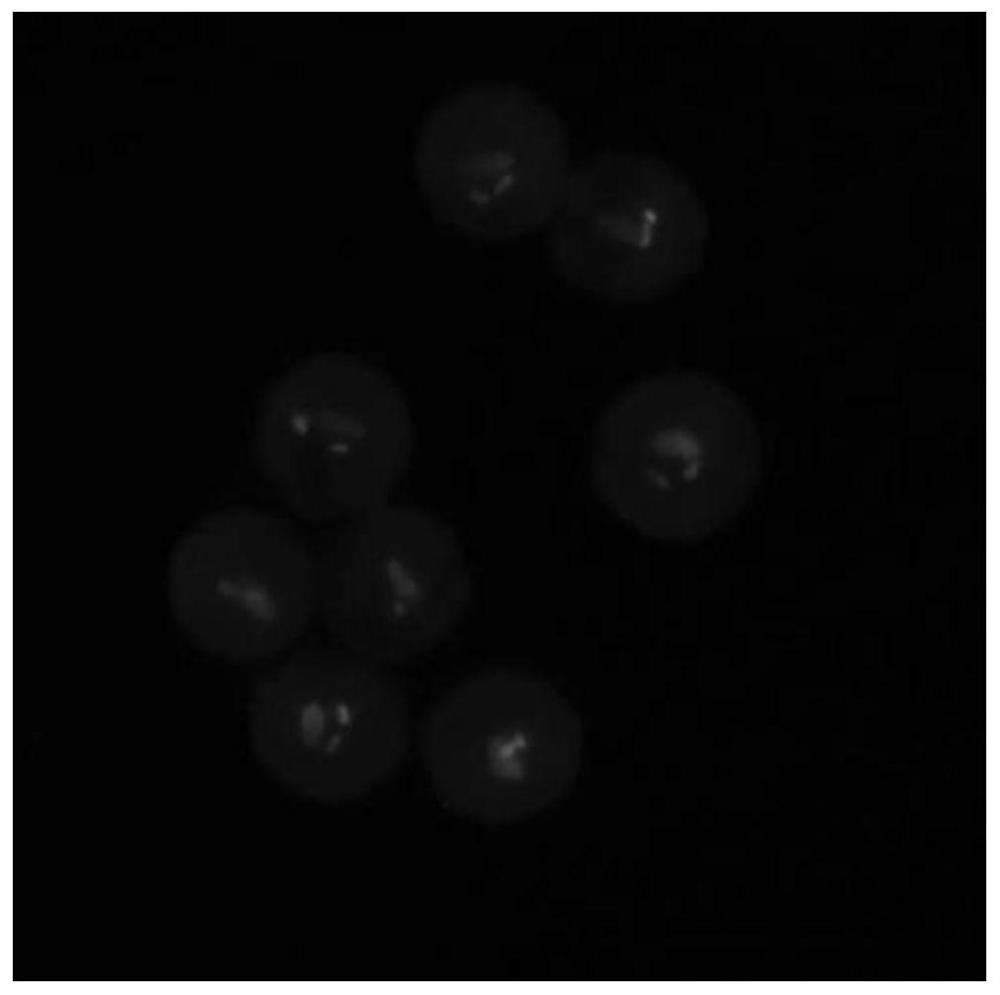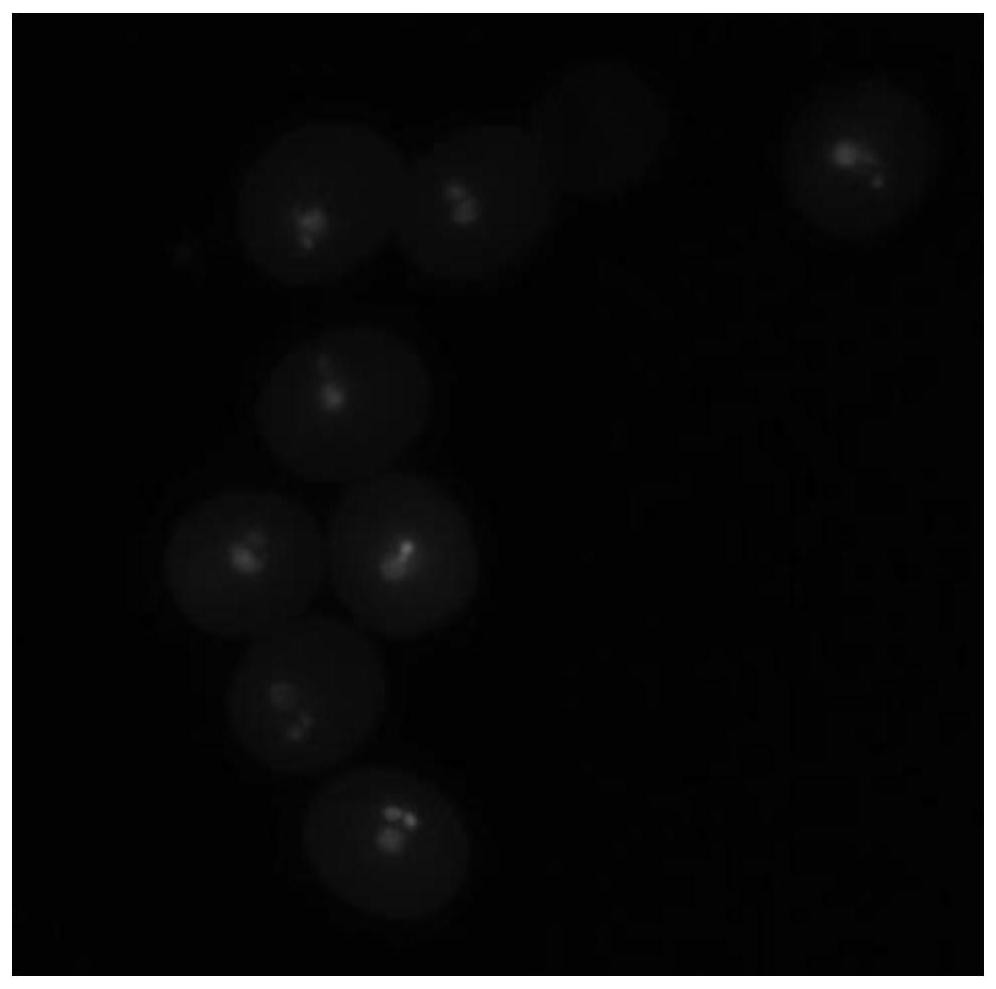A kind of dyeing solution and method for rapid dyeing of pollen of cruciferous crops
A rapid dyeing technology for cruciferous crops, applied in the preparation of test samples, scientific instruments, sampling, etc., can solve the problems of tedious, time-consuming, labor-consuming, etc., achieve good repeatability, obvious contrast of nuclear staining, and reduce Effects of Environmental Pollution
- Summary
- Abstract
- Description
- Claims
- Application Information
AI Technical Summary
Problems solved by technology
Method used
Image
Examples
Embodiment 1
[0025] Embodiment 1: Fluorescent staining method of mature pollen of open flowers of rapeseed
[0026] 1. Preparation of staining solution: first dissolve Hoechst33258 fluorescent dye and sucrose in phosphate buffered saline (PBS, pH=7.4) to prepare solution 1 of Hoechst33258 concentration 20 μg / L and sucrose concentration 10wt%, and then prepare ethanol 60% ( v / v), ethyl acetate acetic acid 10% (v / v), glycerol 30% (v / v) solution two, solution one and solution two were mixed and shaken by volume ratio 1:1 to obtain the staining solution, and placed side by side Store in a refrigerator at 4°C, protected from light.
[0027] 2. Staining: Use a micropipette to absorb 15 μL of the staining solution obtained in step 1 and drop it on the glass slide, then pick the open flowers that need to be stained and observed from the inflorescence, and use tweezers to pick one anther and put it directly on the glass slide. In the staining solution, gently pinch the anthers to release an approp...
Embodiment 2
[0030] Embodiment 2: the fluorescent staining method of Chinese cabbage flower bud pollen
[0031] 1. Preparation of staining solution: first dissolve Hoechst33258 fluorescent dye and sucrose in phosphate buffered saline (PBS, pH=7.4) to prepare solution 1 of Hoechst33258 concentration 30 μg / L and sucrose concentration 8wt%, and then prepare ethanol containing 70% ( v / v), ethyl acetate acetic acid 10% (v / v), glycerol 20% (v / v) solution two, solution one and solution two were mixed and shaken by volume ratio 1:1 to obtain the staining solution, placed in Store in a refrigerator at 4°C, protected from light.
[0032] 2. Staining: Use a micropipette to absorb 17 μL of the staining solution prepared in step 1 and drop it on the glass slide, then pick the flower buds that need to be stained and observed from the inflorescence, and use tweezers to peel off one anther and put it directly on the glass slide Gently pinch the anthers in the staining solution to scatter an appropriate a...
Embodiment 3
[0035] Embodiment 3: the fluorescent staining method of cabbage flower bud pollen
[0036] 1. Preparation of staining solution: first dissolve Hoechst33258 fluorescent dye and sucrose in phosphate buffered saline (PBS, pH=7.4) to prepare solution 1 with Hoechst33258 concentration 40 μg / L and sucrose concentration 9 wt%, and then prepare ethanol containing 65% ( v / v), ethyl acetate acetic acid 10% (v / v), glycerol 25% (v / v) solution two, solution one and solution two were mixed and shaken by volume ratio 1:1 to obtain the staining solution, juxtaposed Store in a refrigerator at 4°C, protected from light.
[0037] 2. Staining: Use a micropipette to absorb 20 μL of the staining solution obtained in step 1 and drop it on the glass slide, then pick the flower buds that need to be stained and observed from the inflorescence, and use tweezers to pick 2 anthers and put them directly on the glass slide. In the staining solution, gently pinch the anthers to release an appropriate amount...
PUM
 Login to View More
Login to View More Abstract
Description
Claims
Application Information
 Login to View More
Login to View More - R&D
- Intellectual Property
- Life Sciences
- Materials
- Tech Scout
- Unparalleled Data Quality
- Higher Quality Content
- 60% Fewer Hallucinations
Browse by: Latest US Patents, China's latest patents, Technical Efficacy Thesaurus, Application Domain, Technology Topic, Popular Technical Reports.
© 2025 PatSnap. All rights reserved.Legal|Privacy policy|Modern Slavery Act Transparency Statement|Sitemap|About US| Contact US: help@patsnap.com



